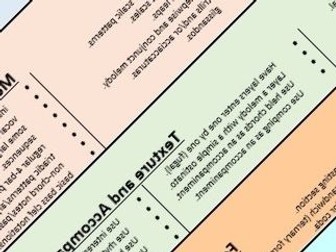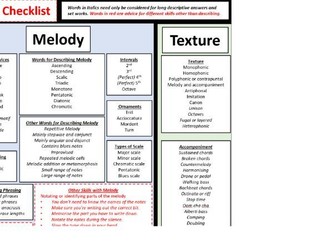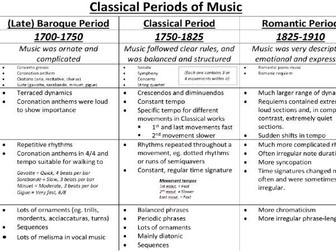MUSIC Progressive Assessment for KS3 and KS4 MUSIC
I have spent hours creating this procedure and these resources, to make assessment of practical skills in music much easier for both teachers and students at KS3 and KS4 (and even Years 5 and 6 of KS2). I implemented it in my department last year, and it made assessment much more objective and standardised, satisfying and empowering, and hugely more progressive in both KS3 and KS4.
I am certain, that if you purchase this, even if you decide not to use it, (or only use parts of it), it will give you loads of ideas!
This assessment procedure nurtures both depth and breadth of students’ learning, not only by developing and tracking their practical ability but also by improving their understanding of musical terms in preparation for listening tests; These resources aim to help tick three boxes of OFSTED’s current focus - Intent, implementation and impact of the curriculum. (Apparently, they like to look at one strand and see how students have developed in that strand over time.)
It works on a point-score basis using Music XP (Experience Points). (Many students will be familiar with this term as it is used in video games).
It assesses progress within 12 individual learning strands (four based on general performance skills and eight based on the use of the musical elements). Students can earn up to 6xp for each strand. (72 in total). Within these 72 marks, there is equal weighting between performing and composing ability…
• four strands assess skills used in performing.
• four strands assess skills used in composing.
• four strands assess skills used in both performing and composing.
It works on the basis that once used in performance, skills associated with certain musical elements can be considered as tools to be used by the student in future compositions. For example, once they learn how to perform the chords on the backbeat from performing a reggae song, this is a tool they could use in their own composition now they’re familiar with it and understand it.


